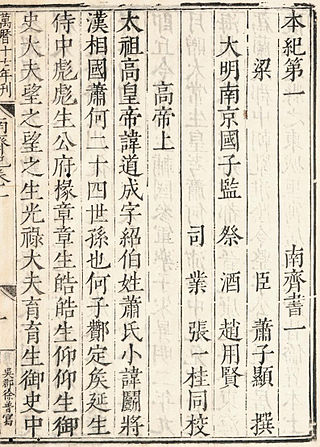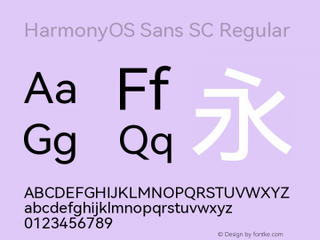
Typography is the art and technique of arranging type to make written language legible, readable and appealing when displayed. The arrangement of type involves selecting typefaces, point sizes, line lengths, line spacing, letter spacing, and spaces between pairs of letters. The term typography is also applied to the style, arrangement, and appearance of the letters, numbers, and symbols created by the process. Type design is a closely related craft, sometimes considered part of typography; most typographers do not design typefaces, and some type designers do not consider themselves typographers. Typography also may be used as an ornamental and decorative device, unrelated to the communication of information.

In typography and lettering, a sans-serif, sans serif, gothic, or simply sans letterform is one that does not have extending features called "serifs" at the end of strokes. Sans-serif typefaces tend to have less stroke width variation than serif typefaces. They are often used to convey simplicity and modernity or minimalism. For the purposes of type classification, sans-serif designs are usually divided into these major groups: § Grotesque and § Neo-grotesque, § Geometric, § Humanist and § Other or mixed.
In typography, a serif is a small line or stroke regularly attached to the end of a larger stroke in a letter or symbol within a particular font or family of fonts. A typeface or "font family" making use of serifs is called a serif typeface, and a typeface that does not include them is sans-serif. Some typography sources refer to sans-serif typefaces as "grotesque" or "Gothic", and serif typefaces as "roman".

A typeface is a design of letters, numbers and other symbols, to be used in printing or for electronic display. Most typefaces include variations in size, weight, slope, width, and so on. Each of these variations of the typeface is a font.

The regular script is the newest of the Chinese script styles, popular starting from the Three Kingdoms period c. 200 CE, and stylistically mature by the 7th century. It is the most common style used in modern text. In its traditional form it is the third-most common in publishing after the Ming and gothic types used exclusively in print.

Ming or Song is a category of typefaces used to display Chinese characters, which are used in the Chinese, Japanese and Korean languages. They are currently the most common style of type in print for Chinese and Japanese. For Japanese text, they are commonly called Mincho typefaces.

Roboto is a neo-grotesque sans-serif typeface family developed by Google as the system font for its mobile operating system Android, and released in 2011 for Android 4.0 "Ice Cream Sandwich".
In typography, the Vox-ATypI classification makes it possible to classify typefaces into general classes. Devised by Maximilien Vox in 1954, it was adopted in 1962 by the Association Typographique Internationale (ATypI) and in 1967 as a British Standard, as British Standards Classification of Typefaces, which is a very basic interpretation and adaptation/modification of the earlier Vox-ATypI classification. On April 27, 2021, ATypI announced that they had de-adopted the system and that they were establishing a working group building towards a new, larger system incorporating the different scripts of the world.
POP is a mono-weight typeface for the Japanese kanji writing system. It is similar to both sans-serif and script-based typefaces in the Latin alphabet. The POP typeface is designed to effect the look of handwritten Kanji, as though produced by a felt-tip marker. Its loose, casual structure makes it similar to casual scripts in the Latin alphabet.

Microsoft YaHei is a sans-serif gothic typeface created by Founder Electronics and Monotype Corporation under commission from Microsoft. Hinting for the font was undertaken by Monotype Imaging. The CJK ideographic characters were designed by the Founder Electronics foundry's senior designer, Li Qi (齐立).

Web typography, like typography generally, is the design of pages – their layout and typeface choices. Unlike traditional print-based typography, pages intended for display on the World Wide Web have additional technical challenges and – given its ability to change the presentation dynamically – additional opportunities. Early web page designs were very simple due to technology limitations; modern designs use Cascading Style Sheets (CSS), JavaScript and other techniques to deliver the typographer's and the client's vision.

Bao'an Stadium station is a station on Line 1 of the Shenzhen Metro in Shenzhen, Guangdong Province, China. The station opened on 15 June 2011. The Chinese name 宝体 is short for 宝安体育馆. The station serves the nearby Bao'an Stadium.

Source Han Sans is a sans-serif gothic typeface family created by Adobe and Google. It is also released by Google under the Noto fonts project as Noto Sans CJK. The family includes seven weights, and supports Traditional Chinese, Simplified Chinese, Japanese and Korean. It also includes Latin, Greek and Cyrillic characters from the Source Sans family.

Source Han Serif is a serif Song/Ming typeface created by Adobe and Google.
Jiu zixing, also known as inherited glyphs form, or traditional glyph form, is a traditional printing orthography form of Chinese character which uses the orthodox forms, mainly referring to the traditional Chinese character glyphs, especially the printed forms after movable type printing. Jiu zixing was formed in the Ming Dynasty, and is also known as Kyūjitai in Japan. It also refers to the characters used in China before the Chinese writing reform and the issuing of the 1964 List of Character Forms of Common Chinese characters for Publishing.
East Asian typography is the application of typography to the writing systems used for the Chinese, Japanese, Korean, and Vietnamese languages. Scripts represented in East Asian typography include Chinese characters, kana, and hangul.
Chinese character forms are the shapes and structures of Chinese characters. They are the physical carriers of written Chinese.

HarmonyOS Sans is a sans-serif typeface made by Huawei. It was first released to developers on June 9, 2021, which is used in HarmonyOS and OpenHarmony operating systems. It is the company second typeface since it's corporate Huawei Sans sans-serif typeface.














